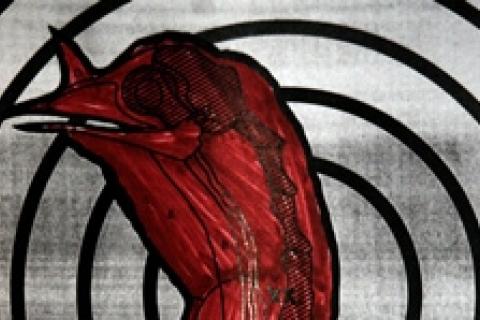
 While most hunters and shooters regularly sight in their rifles, shotguns are the Rodney Dangerfield of firearms "getting no respect" often sitting in a safe until season rolls around. Though shotguns may get patterned at first, very seldom do they afterward.
While most hunters and shooters regularly sight in their rifles, shotguns are the Rodney Dangerfield of firearms "getting no respect" often sitting in a safe until season rolls around. Though shotguns may get patterned at first, very seldom do they afterward.
Just as baseball players visit batting cages or basketball stars spend hours perfecting their free throws, the only way to become more proficient with shooting — no matter the firearm — is to familiarize yourself with it. That means shooting it and with a shotgun with many different loads.
Why?
A shotgun shoots every load different. Maybe not a big shift of impact, but one load generally outperforms others as far as pattern density. It is your job to find that particular load and know where and how it patterns.
Each February, I begin searching for ammo for the upcoming turkey season. The first year, the pile of ammunition was somewhat daunting. But now, after a season or two, the list is much shorter. Instead of looking for one good performing load, I'm looking for one to outperform the one I shot last season.
I admit I cheated somewhat last year by asking the Indian Creek Shooting Systems crew for their recommendations. I took their expert advice and ordered a few boxes of Hevi-13. When I matched it with the Indian Creek Black Diamond Strike choke tube, there was little competition. Even still, I continue to look and have a couple boxes of the latest ammo to try out before season comes in.
Optics on a Shotgun?
For many turkey hunters and still target shooters, a telescopic sight of some type has become standard issue. I've tried red dots and other aiming devices, but still prefer a scope with crosshairs.
To sight in a shotgun equipped with an aiming device, I begin by shooting light recoiling trap loads adjusting the crosshairs to the center of the pattern. Afterwards, I switch to the load I plan to use. I normally sight in the scoped sighted shotgun at 30-40 yards, fine-tuning the center of the pattern with the crosshairs. After I am satisfied with the 40 yard pattern with at least 15 pellet strikes in the kill zone, I begin shooting at different ranges. A shotgun sighted in at 40 yards with a tight shooting choke can easily miss a turkey at 10 yards. It is crucial to know how your shotgun patterns at different ranges.
For patterning, I like life-sized turkey head targets, but I do not agree with the aiming point on most targets. Instead, I prefer to use an aiming point of the junction where the neck and body meet. I have my shotgun sighted in to pattern a few inches high of the aiming point and spread a liberal dosage of tungsten based pellets throughout a turkey's cranium region, but my aim point is still the neck and body intersection.
If you aren't satisfied with your scattergun's performance, pull it out of the safe, knock off the dust and give it some love.
- 4895 views

